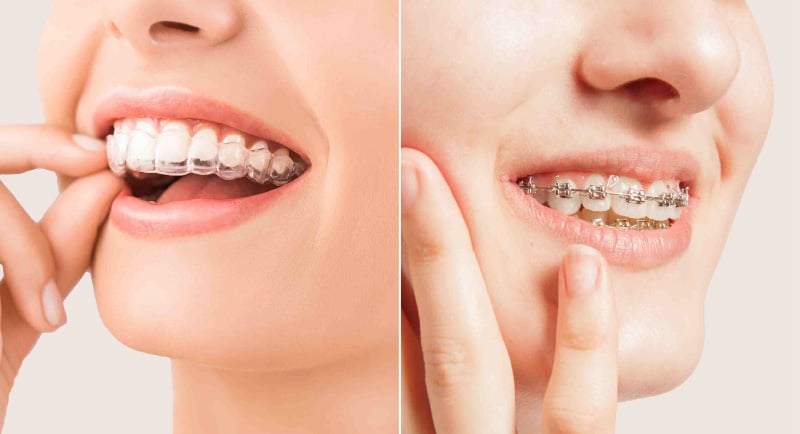Tuesday: Open for Emergencies (By Appointment Only)
Braces vs Aligners – Which Will Suit You Better?
Choosing between braces and clear aligners can be challenging when considering orthodontic treatment. This blog breaks down the key differences, including effectiveness, comfort, appearance, cost, and treatment duration. Learn about the pros and cons of each option and discover which solution best fits your lifestyle, dental needs, and budget. Whether you're looking for a discreet way to straighten your teeth or need a more comprehensive approach, this guide will help you make an informed decision.
2/28/20255 min read


Understanding Orthodontic Options
Orthodontics offers various solutions for individuals seeking to achieve straighter teeth and improved dental alignment, primarily through traditional braces and clear aligners. Both methods serve the same fundamental purpose—correcting misalignment of teeth—but they operate in distinct ways that cater to different dental needs and personal preferences.
Traditional braces consist of metal brackets adhered to the teeth, connected by wires that are periodically tightened by an orthodontist. This tension gradually shifts the teeth into their desired positions over time. Metal braces are highly effective for complex cases, such as severe misalignment or bite issues, since they provide the necessary force to shift teeth efficiently. They are also suitable for patients of all ages and can treat various orthodontic conditions, including overcrowding, gaps, and bite discrepancies.
On the other hand, clear aligners, such as Invisalign, utilize a series of removable plastic trays that are custom-fitted to the patient's teeth. Each tray is designed to incrementally shift the teeth into place over time. Clear aligners offer significant aesthetic advantages, as they are nearly invisible when worn. They are ideal for mild to moderate orthodontic issues and are particularly favored by adults and teenagers who prioritize discretion in their treatment. However, successful outcomes often necessitate the wearer’s commitment to wearing the aligners for 20 to 22 hours daily and changing the trays as prescribed.
Before selecting between these two orthodontic options, a thorough assessment by an orthodontist is necessary. Factors including the specific dental concerns, lifestyle, treatment duration, and personal preferences will influence the optimal choice. Understanding the mechanisms and suitability of braces and clear aligners is crucial for individuals to make informed decisions about their orthodontic treatments.
Advantages and Disadvantages of Braces
Traditional braces have long been a go-to solution for a variety of orthodontic issues, primarily due to their proven effectiveness. One of the most significant advantages of braces is their capability to address complex dental corrections. They provide substantial force and exacting control over teeth, making them the preferred choice for more severe misalignments, bite issues, and overcrowded teeth. Unlike some other orthodontic options, braces can effectively treat a broader range of dental problems, ensuring that patients receive the appropriate care tailored to their specific needs.
Furthermore, braces are often deemed more reliable for long-term treatment. The fixed nature of braces means that patients do not have to worry about losing or misplacing their appliances, as can happen with removable aligners. In many cases, the type of braces employed—be it metal, ceramic, or lingual—can also enhance treatment outcomes based on the patient’s individual preferences and lifestyle considerations.
However, traditional braces do come with certain drawbacks. One notable disadvantage is the discomfort that patients may experience, especially after adjustments or when first getting fitted. The brackets and wires can cause irritation to the gums and inner mouth, leading to temporary discomfort, which can deter some individuals from choosing this method.
Dietary restrictions also pose a challenge for those opting for braces. Patients are often advised to avoid hard, chewy, or sticky foods that might dislodge or damage the braces, limiting their dietary choices. Additionally, the aesthetic aspect of having metal braces can be a concern for some individuals, particularly adolescents and adults, who may prefer a more discreet orthodontic option.
Ultimately, understanding the advantages and disadvantages of braces can empower patients to make informed decisions regarding their orthodontic treatment. By carefully considering both the potentials for successful treatment and the associated challenges, individuals can determine if braces are the right choice for their dental needs.
The Benefits and Limitations of Aligners
Clear aligners have gained significant popularity as an orthodontic treatment option due to their myriad of benefits. One of the most notable advantages is their discreet appearance. Unlike traditional braces with metal brackets and wires, aligners are typically made of transparent plastic, making them less noticeable when worn. This feature appeals to adults and teens who wish to avoid the aesthetic drawbacks associated with conventional braces, enhancing the patient’s confidence throughout their treatment.
Comfort is another benefit that aligns with the preferences of many patients. Clear aligners are custom-molded to fit one’s teeth, which can lead to a more comfortable experience compared to the discomfort often associated with traditional braces. The absence of brackets and wires helps reduce the likelihood of irritation in the mouth, providing a gentler approach to teeth straightening.
Removability is a significant advantage that clear aligners offer, allowing patients to take them out during meals or while brushing and flossing. This feature contributes to improved oral hygiene as there are no dietary restrictions, enabling individuals to maintain their usual eating habits without the fear of damaging their braces. Patients can also clean their teeth more effectively, which can lead to better long-term dental health.
However, it is essential to consider the limitations of aligners as well. They may struggle with severe misalignments, which are often more effectively treated with traditional braces. Additionally, the effectiveness of aligners largely depends on patient compliance; they must be worn for at least 20 to 22 hours a day to ensure desired results. Failure to adhere to these guidelines can hinder progress and prolong treatment time.
Ultimately, aligners can be an excellent orthodontic solution for many individuals, but evaluating both the benefits and limitations is crucial to determine if they align with one’s specific dental needs.
Making the Right Choice for Your Smile
Deciding between braces and aligners is a crucial step in your orthodontic journey. Both treatment options have their unique advantages and limitations, which must be considered in relation to your specific dental condition, lifestyle, and personal preferences. Braces, often made from metal or ceramic, provide a fixed solution that can address a variety of complex alignment issues effectively. They are particularly beneficial for severe misalignment, as they apply constant pressure, allowing for precise adjustments in teeth positioning over time.
On the other hand, aligners offer a more discreet alternative, as they are made from clear plastic, making them less noticeable than traditional braces. They are removable, which adds convenience for patients in terms of oral hygiene and dietary choices. However, aligners may not be suitable for all cases, particularly those requiring significant movement of teeth or correction of intricate bite issues. It’s essential to evaluate the severity of your orthodontic needs when determining the right option.
Furthermore, your lifestyle plays a significant role in making this decision. If you lead an active life or participate in contact sports, braces might be more suitable due to their stability; whereas aligners could be more appealing for individuals conscious about aesthetics or those who prefer the convenience of removing their orthodontic device when necessary.
Ultimately, consulting with an orthodontic professional is crucial in making an informed choice. Dr. Glenn Hendricks’ clinic offers personalized assessments that take into account your specific dental situation and treatment goals. By visiting the clinic, you can receive expert guidance tailored to your needs, ensuring that you choose the orthodontic solution that aligns best with your smile aspirations and lifestyle requirements.
Dr. Glenn Hendricks
Exceptional dental care in a friendly atmosphere.
CONTACT US
LETS CONNECT!
(905) 569-0777
© 2025. All rights reserved.
